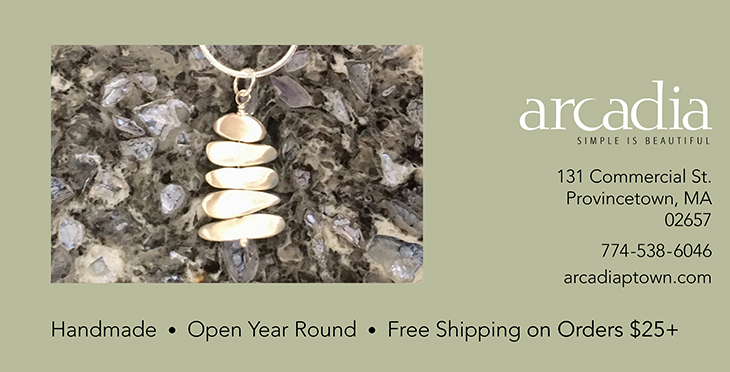Landscaping on the Outer Cape is not for the faint of heart, says Megan Spoerndle, the bad ass, brown-eyed flower child behind Provincetown’s 16-year-old Stix and Stones Landscaping.
There’s the physical labor and exposure to the elements. Then there’s an added challenge that’s gotten more complex with climate change: working with clients who want their waterfront gardens planted with delicate flowerbeds that tend to get pummeled by salty winds and flooding, particularly when summer ends.
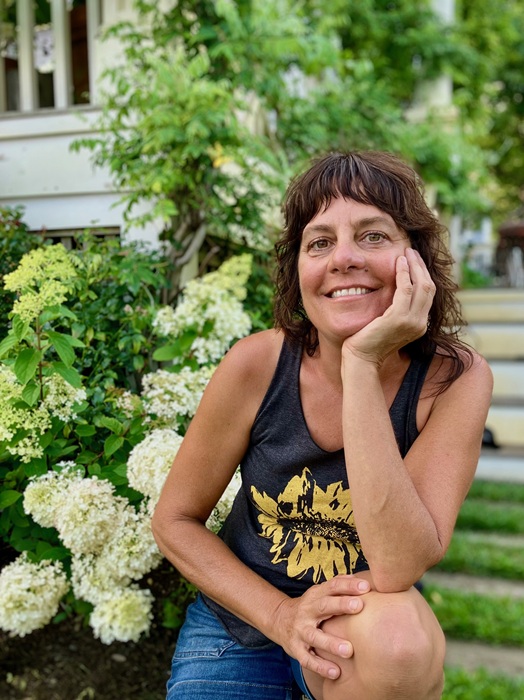
“Something might do OK for a couple of years, but on the East End, the way these winter storms have shifted over the past years, the water comes right up on the property and destroys it,” says Spoerndle, who has found herself replanting certain gardens three or four years in a row.
That’s been a conundrum. “As a gardener,” she says, “your whole thing is thinking about these plants — about how they work together and how, over 5 or 10 years, they’ll develop together and complement each other.”
It’s the kind of open-minded, long-view optimism that has helped the Cleveland native cultivate her livelihood here.
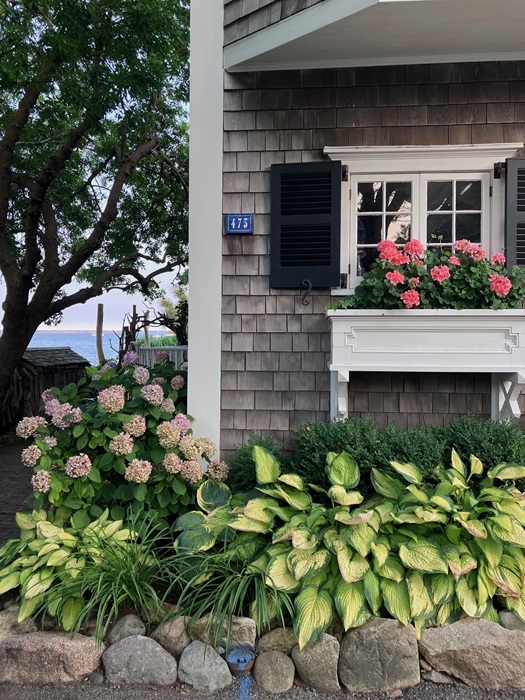
Spoerndle’s 1997 move to Provincetown was inspired while she was still a student at the progressive (and now defunct) Western College Program of Interdisciplinary Studies at Miami of Ohio and had come for a day trip while visiting her great-aunt Margie in Harwich.
“When I landed on the streets, I thought, ‘Oh my gosh, what is this place?’ I was literally skipping down the street,” she says, remembering how she bought hemp jewelry, ate at Café Crudité, and felt a kinship with the queer, eclectic populace. She decided then that she would move here when school ended.
After finding a housekeeping job and a room at Gabriel’s Guesthouse, she loaded her purple Saturn station wagon with her belongings and two pet ferrets and drove through the night from Ohio to get here by Memorial Day weekend.
A season at Gabriel’s soon led to other gigs: line cook at Café Crudité, housepainter, and eventually a spot on the landscaping crew at Garden Renovations. There, she picked up skills from gardening to stonework, which she learned from Paolo Rebaudengo — the accomplished Italian stonemason was then back and forth between Provincetown and upstate New York.
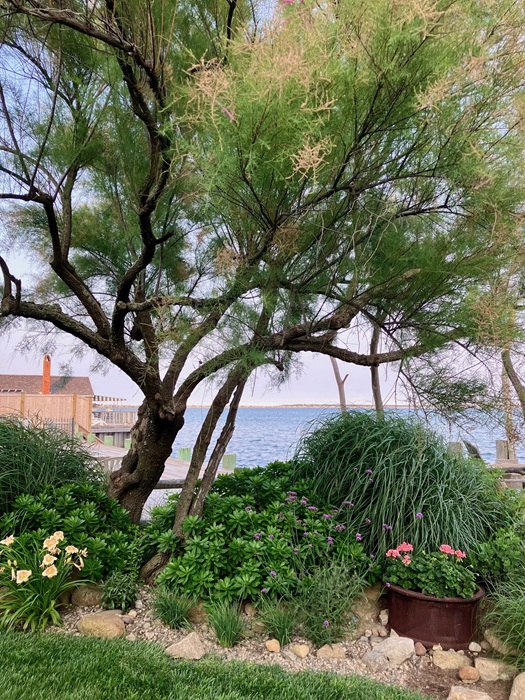
That became her focus when she decided to start her own business in 2009. “Stoneworking is probably my first passion in this line of work,” she says. “I love taking material that is pressed carbon — a life form of hundreds and thousands of years — and then building with it,” she adds, speaking with her usual unwavering gaze. “It’s almost like you’re creating a story by looking at these various shapes and seeing how they fit together.”
At 50, she still makes lifting and stacking stones look easy. Unlike the often Sisyphean task of planting flowers by the sea, she says, “Stonework is really satisfying, because it’s there forever — unless another human decides to tear it apart, or a huge tree root does so over time.”
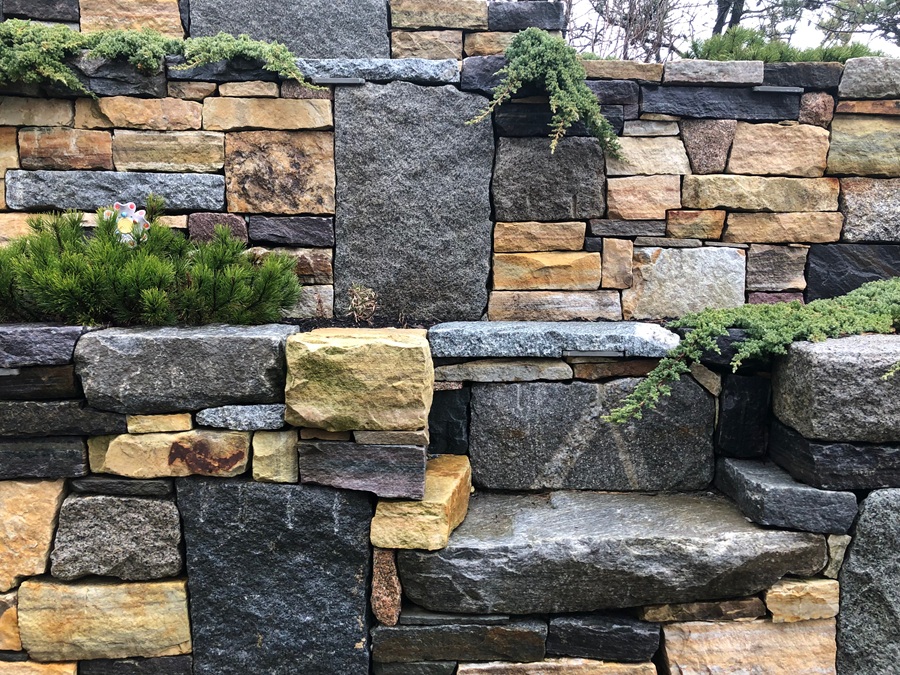
There was a period — what Spoerndle now calls a “beautifully fun time” — between about 2013 and 2017 when her business boomed. She added gardening and landscaping to her offerings, plus three crew supervisors and a four-truck fleet, and had 115 gardens to tend.
But the idyllic days wouldn’t last. The business started “bleeding staff” in part due to the Provincetown housing shortage, she says, which drove many on her crew to move away. That’s when Spoerndle entered a new phase of her business: panic. She had too many properties and not enough help but kept pushing herself. “I was still young enough that I didn’t want to disappoint my clients,” she says. “And I’m sure I was becoming more and more difficult to work for.”

She eventually accepted the idea that growing smaller could be a goal. Today she has a steady crew with whom she cares for some 30 gardens; many of them she knows quite well, as she’s been tending them for more than 20 years. The shift means that now you’ll find Spoerndle where she wants to be — in her tank and work boots, bronzing under the sun as she lugs stones, trims hedges, and gets dirt under her fingernails.
Customers’ garden desires have changed, too. Lately, she says, their interests skew toward more natural-looking designs. Maybe it’s good that people are beginning to ask for gardens that are more about engaging with the environment, she says. “I want to see the butterflies,” they tell her. “I want to see hummingbirds. I want to see bees.”
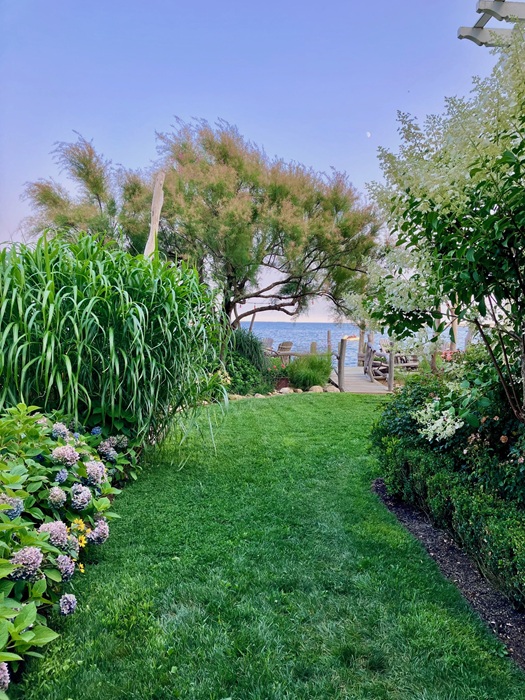
Her personal aesthetic is perhaps more formal; she still likes a structured hedge and stonework, with flowers used minimally as accents amid the forms.
Still, she’s partial to privets for the way they provide early nectar for pollinators; she’s also a fan of native flora like bayberry and inkberry and of the common daylilies that have naturalized here. “I’ve seen how much more work goes into using plants that don’t necessarily thrive here,” she says.
You might say Spoerndle has co-evolved with her gardens.
